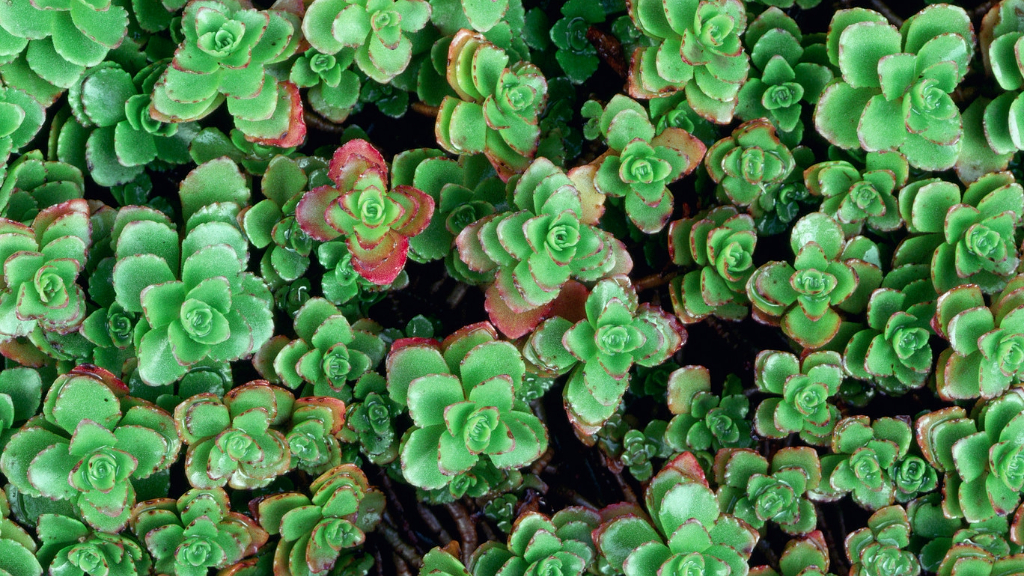History Of Sedums: Learn About Sedum Stonecrop Plants


Some of my favorite low maintenance plants are sedums. I like to tuck them in amongst a rockery, along paths, in containers and even have a few as houseplants. Once established, these are the type of plant you don't have to worry about when you go on extended holiday.
They are succulents and not only useful as beautiful carefree specimens, but the history of sedums includes use as food and medicine. Sedums can be found wild in most parts of the world. They are especially adapted to poor soils and can be very drought tolerant.
They may be deciduous or evergreen, depending upon type. Additional characteristics vary by plant, with some low growing ground covers, others trailing, hanging specimens and still other varieties are taller vertical spectacles. The most common in the group have leaves that are plump and waxy with starry flower clusters that rise above the foliage - such as Autumn Joy sedum.
Sedum Plant History
The Sedum genus name comes from the Latin 'sedo,' meaning "to sit." They are found in Europe, Asia, North Africa, Mexico and a few are even native to North America. Recognized species go by very colorful names such as Burro's Tail, Gold Chain, Bird's Bread, and Creeping Tom. The versatile plants are also in a bit of a tug-of-war surrounding their genus name. Some in the family are now classed as members of Hylotelephium, while others retain their Sedum status. Such changes continue to occur in the botanical world as scientists unravel the genes of plants and reposition them to reflect more accurate family groups. As garden and greenhouse specimens, sedums have become popular since the early 1900s but were used by collectors as early as the 1800s.
History of Sedums as Food and Medicine
Anything you ingest should be carefully researched. This goes for the edible and medicinal varieties of sedum stonecrop plants. There are over 400 species in the family, some of which could cause illness if ingested. The juice in the succulent leaves and stems can be used topically to quell burn symptoms and on small scrapes and scratches.
One variety, Sedum sarmentosum, was reportedly used in Asia to treat inflammatory conditions. Several species of Sedum are undergoing trials as treatments for pain and swelling, with promising early results. As a food, sedums are used in salads and soups. S. sarmentosum and S. reflexum are the two most notable varieties that have a history of food use.
Fun Types of Sedum Stonecrop Plants
There are many unique forms of sedum plants. Here is a sampling of fun types to grow in your garden:
Sign up for the Gardening Know How newsletter today and receive a free copy of our e-book "How to Grow Delicious Tomatoes".
Groundcovers
- Two-Row sedum (S. spurium) - An evergreen, mat forming species with numerous colorful cultivars
- Broadleaf stonecrop (S. spathulifolium) - Silver to lime green leaves, branching, low, spreading plant.
- Spanish stonecrop (S. hispanicum) - Close set, finely textured leaves that blend seamlessly into each other with blue-gray color.
Upright
- Ice Plant stonecrop (Hylotelephium spectabile) - A vertical classic with a huge umbel of tiny starry flowers.
- Coppertone sedum (S. nussbaumerianum) - Bronze foliage and orange-gold flowers.
- Orpine (S. telephium syn. Hylotelephium telephium) - Bluish purple leaves and deeply hued stems.
Trailing
- Burro's Tail (S. morganianum) - Classic chubby, bluish green leaves reminiscent of a burro's tail
- Carpet sedum (S. lineare) - Tiny buttercup yellow foliage with dense growth and cascading habit.
